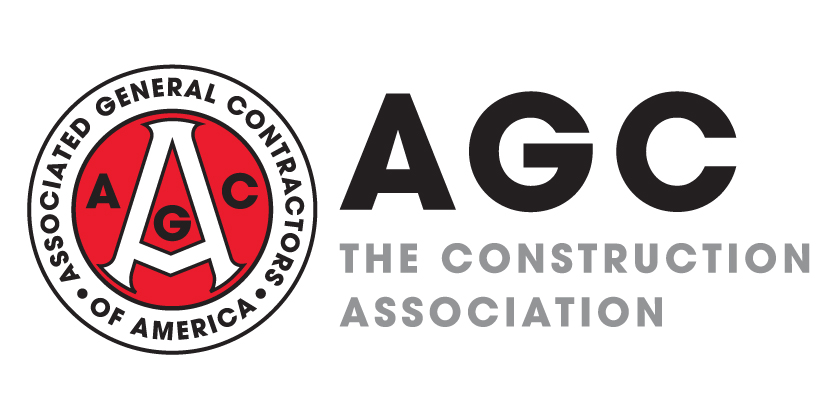
Contractors' bid prices increased 0.6% from June to July, while materials and services input costs rose 0.2% for the month, based on the latest producer price indexes (PPIs) that the Bureau of Labor Statistics (BLS) posted today. AGC posted tables and an explanation focusing on construction prices and costs. Compared to July 2018, the PPI for new nonresidential building construction—a measure of the price that contractors say they would charge to build a fixed set of buildings—rose 5.6%. Increases ranged from 4.5% year-over-year (y/y) for new office and health care building construction to 5.4% for warehouses, 6.6% for industrial buildings and 7.1% for schools. Increases in PPIs for subcontractors' new, repair and maintenance work on nonresidential buildings ranged from 2.3% y/y for roofing contractors to 5.6% for electrical contractors, 6.1% for plumbing contractors and 6.9% for concrete contractors. In contrast to these output prices, the PPI for inputs to construction—excluding capital investment, labor and imports—inched up 0.1% y/y, a sharp deceleration from the 7.9% increase one year earlier. This index covers both goods (56%) and services (44%). The PPI for energy inputs to construction tumbled 8.1% y/y. The PPI for nonenergy goods inputs rose 0.9% y/y; the index for services inputs increased 1.0% y/y. Price increases turned negative for some previously fast-rising inputs such as lumber and plywood (down 16% y/y, following a 16% jump a year earlier), diesel fuel (-14% y/y, following a 43% rise); steel mill products (-7.5% y/y, following a 12% increase); aluminum mill shapes (-4.9%, following a 17% gain) and gypsum products (-7.3% y/y, following a 4.9% rise). In contrast, the PPI for architectural coatings rose 7.8% y/y, vs. 4.6% a year earlier.
There were 347,000 job openings in construction at the end of June, not seasonally adjusted, an increase of 24,000 (7%) from June 2018, and the highest total for June since the series began in December 2000, BLS reported on Tuesday in its latest Job Openings and Labor Turnover Survey (JOLTS) release. The industry hired 491,000 employees in June, not seasonally adjusted, the largest June total since 2007. The quit rate rose to 2.7% of employees, the highest June rate since 2006, a possible sign that workers are confident of finding other jobs in construction or elsewhere. Together, the record-high job openings at the end of June, high quit rate and low construction unemployment rate in July (3.8%, not seasonally adjusted, as BLS reported on August 2), and nearly 50-year low for the total unemployment rate underscore the challenge that contractors face in finding and retaining acceptable workers to hire. Contractors are invited to fill out the 2019 Autodesk and AGC of America Workforce Survey; the survey will close on August 16.
The National Association of Home Builders reported in its "Eye on Housing" blog on Monday that homebuilding "labor and subcontractor shortages remained widespread in July of 2019 ...according to results from special questions on the survey for the NAHB/Well Fargo Housing Market Index (HMI). In July, the HMI survey asked builders specifically about shortages in 15 different occupations. Shortages of labor directly employed by builders remained at least fairly widespread for each of the 15, ranging from a low of 47% for building maintenance managers to a high of 83% for framing crews. Many of the shortage percentages were little changed from where they were at this point last year....Averaged across the nine occupations NAHB has been covering in a consistent way since the 1990s, the incidence of shortages reached 69% in 2019—the highest number on record....Since 2013 a persistent 5- to 7-point gap opened up between the 9-trade average shortage of subcontractors and labor directly employed by builders, with subcontractor shortages being consistently more widespread....In 2019, the gap was still evident, although it narrowed somewhat for the first time in quite a while. The 2019 survey showed only a three-point spread between the 9-trade shortage averages for subcontractors and labor directly employed by builders....Seventy-nine percent of builders said that the shortage of labor was...making it difficult for them to find subcontractors with well-trained employees."
Hotel construction remains strong for now but may be close to a turning point. Private construction spending on lodging increased 7.8% in the first half of 2019 compared to the same period in 2018, the Census Bureau reported on August 1. Data provider Lodging Econometrics (LE) reported on July 31, "for the second quarter [Q2] of 2019, the total U.S. construction pipeline climbed to 5,653 projects/693,207 rooms, up 6% by projects and 9% by rooms [y/y]. Pipeline totals are just 230 projects shy of the all-time high of 5,883 projects/785,547 rooms reached in [Q2] 2008. Projects currently under construction stand at 1,727 projects/233,600 rooms with projects scheduled to start construction in the next 12 months at 2,552 projects/295,989 rooms. Both are at the highest levels since early 2008. Projects in the early planning stage stand at 1,374 projects/163,618 rooms....Trendline analysis suggests that the pipeline is in a topping-out formation as new project announcements into the pipeline in the second quarter are at 359 projects/44,895 rooms, their lowest count since the fourth quarter of 2014....these declines can be attributed to business spending declines which have turned negative for the first time since early 2016. Declines are due primarily to the uncertainty caused by trade and tariff problems and the slowing global economy." Data provider CBRE reported that a key metric for hotel investors, revenue per available room, "grew by 1.1% year-over-year, a slower pace than the 4.1% of a year ago and the lowest rate since the current hotel cycle began in Q1 2010." LE reported on August 1 that the five markets with the largest hotel construction pipelines were New York City, Dallas, Los Angeles, Houston and Atlanta.




